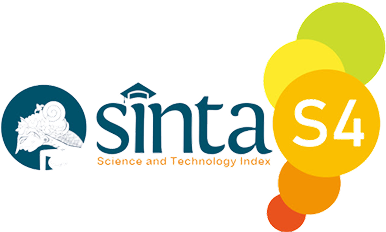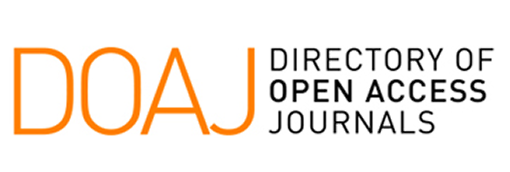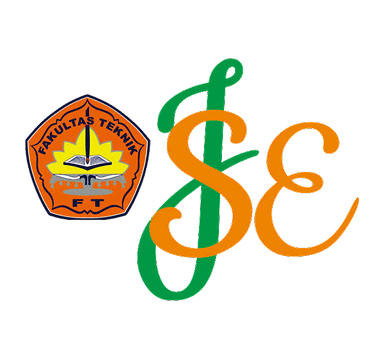Pengembangan Pendekatan Audit Teknologi untuk Optimalisasi Pengelolaan IPLT dengan Teknologi Pengolahan Semi-mekanis (Studi Kasus: IPLT Kalimulya Depok)
Keywords:
technoware, humanware, infoware, orgaware, STP, audit technologyAbstract
The 2030 Sustainable Development Goals (SDGs), based on human rights and equality, urge developing countries, including Indonesia, to accelerate development efforts, particularly in the area of sanitation. In line with the SDGs, Indonesia has set a national medium-term development plan (RPJMN) for 2020-2024 that aims to achieve 90% access to adequate sanitation, with 15% designated as safe sanitation and 0% open defecation. The safe sanitation targets are driving the development of septage treatment plants (IPLT) in various cities and districts in Indonesia. Indonesian IPLTs are transitioning from traditional to semi-mechanical or fully mechanical systems. The Kalimulya IPLT uses a semi-mechanical approach, combining conventional wastewater treatment with mechanical sludge treatment. This study evaluates the IPLT Kalimulya using a technology audit approach based on the UNESCAP (1989) methodology to identify factors affecting the optimisation of IPLT management. The assessment of technoware, humanware, infoware and orgaware revealed an overall Technology Capability Classification (TCC) score of 0.55 for IPLT Kalimulya, indicating a 'good' category with semi-modern technology. The infoware component achieved the highest score, reflecting strong performance, while the humanware and technoware components were rated at a standard level.
References
[1] Indonesia, R. (2020). Rencana pembangunan jangka menengah nasional 2020-2024. Peraturan Presiden Republik Indonesia, 303.
[2] Badan Pusat Statistik Provinsi Jawa Barat. (2020). Jabar.bps.go.id.
[3] Diastiningsih, Y. D. (2022). Faktor-Faktor yang Mempengaruhi Perilaku Open Defecation Free (ODF). Jurnal Pengabdian Kesehatan Masyarakat (Pengmaskesmas), 2(1).
[4] Permen PUPR No. 04/PRT/M/2017 Tahun 2017. (2017). Database Peraturan | JDIH BPK. https://peraturan.bpk.go.id/Details/104453/permen-pupr-no-04prtm2017-tahun-2017
[5] Putri, N. C., & Hermana, J. (2015). Kajian implementasi instalasi pengolahan lumpur tinja di Indonesia. Jurnal Teknik ITS, 4(1), 1-6
[6] Aryantie, M. H., & Purwati, S. U. (2021). Analisis Kebijakan Sistem Pengolahan Air Limbah Rumah Tangga Kota Depok. Jurnal Wilayah Dan Lingkungan, 9(2), 172-185.
[7] M. Komarudin, S. Hariyadi, B. Kurniawan, “Analisis Daya Tampung Beban Pencemaran Sungai Pesanggrahan,” J. Pengelolaan Sumberdaya Alam dan Lingkungan, vol. 5 (2), 2015.
[8] Firmansyah, Y. W., Setiani, O., & Darundiati, Y. H. (2021). Kondisi Sungai di Indonesia Ditinjau dari Daya Tampung Beban Pencemaran: Studi Literatur. Jurnal Serambi Engineering, 6(2).
[9] ESCAP, U. (1989). A framework for technology-based development: technology content assessment.
[10] Anggraini, F., & Nuraeni, R. (2016). Penilaian Instalasi Pengolahan Lumpur Tinja (IPLT) di beberapa kota di Indonesia dengan menggunakan analisa faktor. Jurnal Sumber Daya Air, 12(2), 147-158.
[11] Kementerian Pekerjaan Umum dan Perumahan Rakyat. (2018). Petunjuk Teknis Penilaian Kinerja UPTD Pengelola Air Limbah Domestik.
[12] Ramík, J. (2020). Pairwise comparisons Method: Theory and Applications in Decision Making. Switzerland: Springer Nature.
[13] Hill, R. (1998). What sample size is “enough” in internet survey research. Interpersonal Computing and Technology: An electronic journal for the 21st century, 6(3-4), 1-12.
[14] Salomon, V. A. P., & Gomes, L. F. A. M. (2024). Consistency Improvement in the Analytic Hierarchy Process. Mathematics, 12(6), 828.
[15] Dermawan, A. A., Rini, R. O. P., Mulyadi, T., Ilham, W., & Putera, D. A. (2023). Penilaian Sofistikasi Teknologi Pada PT. XYZ Dengan Menggunakan Pendekatan Technoware, Humanware, Infoware, Dan Organware (THIO). Sigma Teknika, 6(1), 013-024.
[16] Nuraeni, R., & Anggraini, F. (2015). Diagnosis Kinerja Instalasi Pengolahan Lumpur Tinja (IPLT).
[17] Purwati, N. P. A. L., Andrawina, L., & Rumanti, A. A. (2023). Technology Assessment with Technometric Model in Small and Medium Industries: A Case Study at Traditional Textile “Kain Tenun Endek & Gringsing” Bali. International Journal of Innovation, Management and Technology, 14(3).
Downloads
Published
Issue
Section
License
Copyright (c) 2024 Anggita Laksmi Prameswari, Dyah Wulandari Putri (Author)

This work is licensed under a Creative Commons Attribution 4.0 International License.












